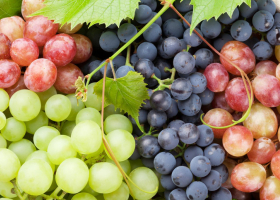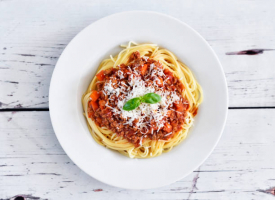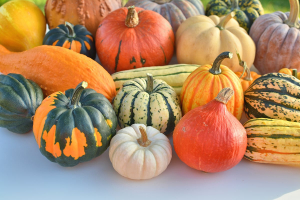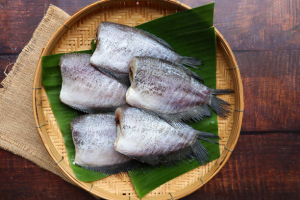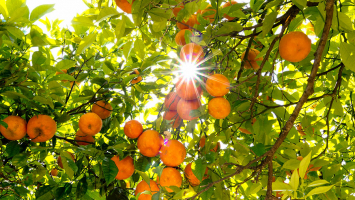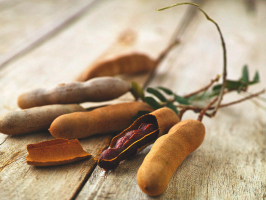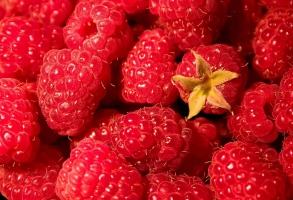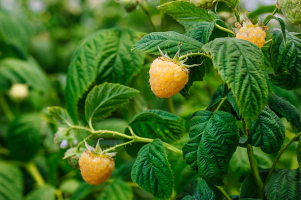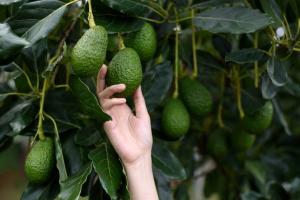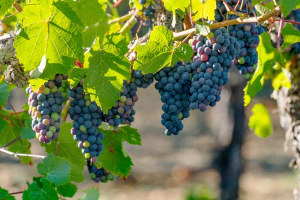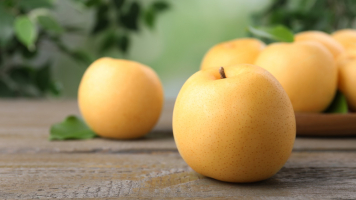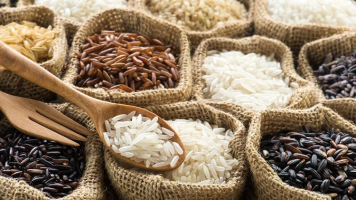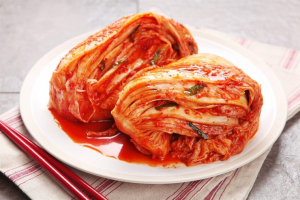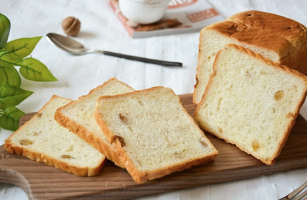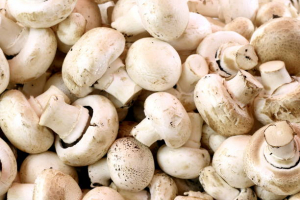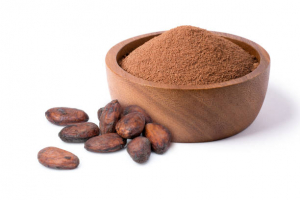Top 10 Most Delicious Types Of Back Fruits
Many excellent and tasty black fruits can be found around the world. Their unique and beautiful color is a suitable suggestion for decorating foods or ... read more...consuming as a fresh and succulent dessert. Also, they are high in beneficial nutrients. It’s time to refresh your taste buds and enjoy many extraordinary experiences with these black fruits Toplist.info about to mention in this article. Please read on to get the best and most compatible choice.
-
The blackberry is an edible fruit produced by many species in the genus Rubus in the family Rosaceae, hybrids among these species within the subgenus Rubus, and hybrids between the subgenera Rubus and Idaeobatus. Blackberries are distinguished by their color, distinctive structure, and flavor. Blackberries, like raspberries, are not strictly berries; rather, they are an aggregation fruit made up of several drupes bound together by extremely tiny, almost invisible hairs. They have a solid, edible core rather than a hollow center. It has a rich inky sheen with purple tints when fully ripe. It is juicy, soft, and succulent. Their flavor is sweet, slightly tart, with earthy undertones.
Blackberries have a complicated evolutionary history, with native species found in Asia, Europe, North America, and South America. The most widely produced species in North America for commercial purposes is Rubus ursinus, which is native to the Pacific Northwest. The collective species Rubus fruticosus, which consists of six species, is found across Europe. In a temperate region with pleasant and humid weather, blackberries flourish. They are a good source of vitamins A and C, iron, calcium, and dietary fiber. Blackberries get their dark purple pigmentation from the phytonutrient anthocyanin, which also has antioxidant properties.
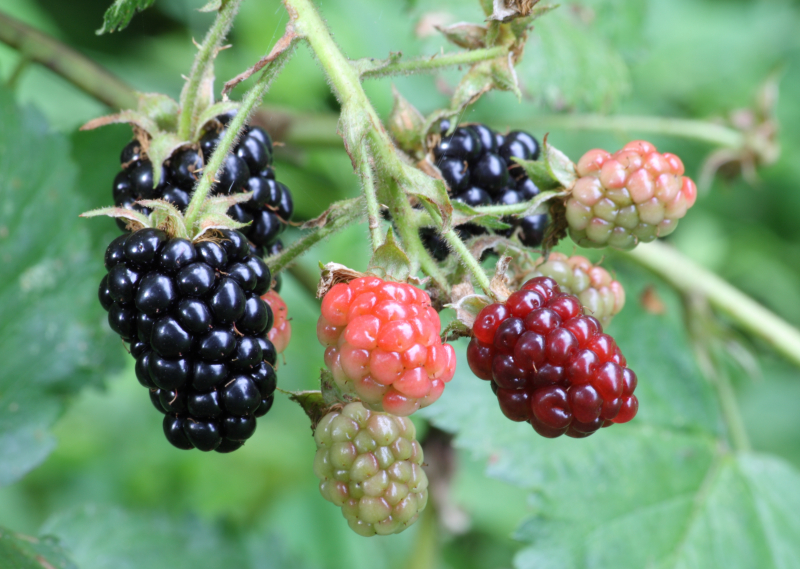
Wikipedia 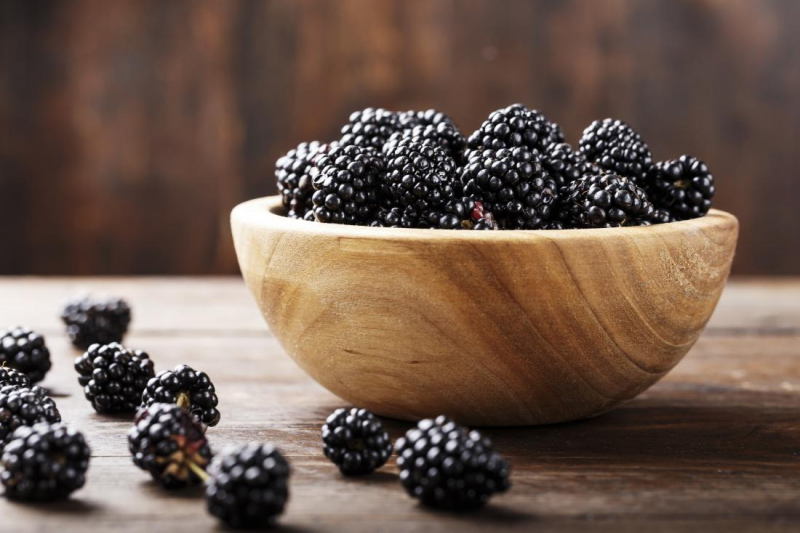
Medical News Today -
Sambucus nigra is a species complex of flowering plants in the family Adoxaceae native to most of Europe. Common names include elder, elderberry, black elder, European elder, European elderberry, European black elderberry, and tramman (Isle of Man). It thrives in a range of environments, primarily in sunny areas with fertile soils that are both moist and dry. The plant is extensively cultivated as a tiny tree or decorative shrub. Both the blossoms and the berries have a long history of usage in cooking, mostly for wine and cordial. There is no scientific proof that elderberry has any benefits for preserving health or curing ailments, despite the fact that it is frequently utilized in dietary supplements and conventional medicine.
Elderberry is a tiny, deciduous tree or shrub that rarely grows higher than 6 meters in height. When young, the bark is a light gray color that gradually darkens to a coarse gray outer bark with noticeable lenticels and lengthwise furrowing. The leaves have five to seven (sometimes nine) pinnate leaflets that are 5 to 12 cm long, 3-5 cm wide, and have a serrated margin. They are grouped in opposing pairs and measure between 10 and 30 centimeters long. Young stems are hollow in nature. Late autumn sees the production of the fruit, which is a glossy, dark purple to black berry with a diameter of 3 to 5 mm. The dark color of elderberry fruit originates from its substantial phenolic content, mainly from anthocyanins.
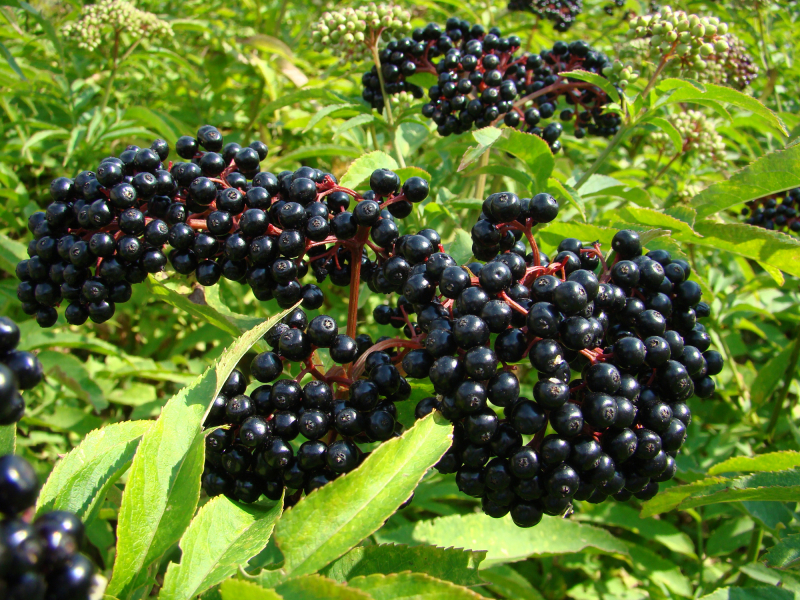
Wikipedia 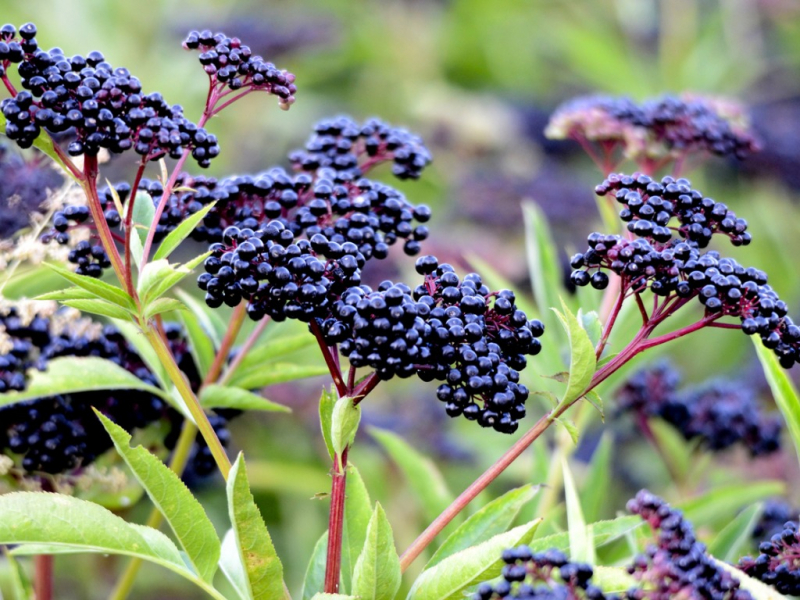
Gardening Know How -
The blackcurrant (Ribes nigrum), also known as black currant or cassis, is a deciduous shrub in the family Grossulariaceae grown for its edible berries. It is native to temperate parts of central and northern Europe and northern Asia, where it prefers damp fertile soils. It is widely cultivated both commercially and domestically. Although it can withstand the winter, cold temperatures during the spring flowering period may result in a smaller crop. In the summer, clusters of tiny, glossy black fruit that can be picked by hand or machine form along the stems.
The medium-sized shrub Ribes nigrum has a height and width of 1.5 meters. The leaves are simple, alternating, and range in size from 3 to 5 centimeters, having five palmate lobes and a serrated border. Strong aromas emanate from every area of the plant. The strigs of green fruit ripen to edible berries in the middle of the summer. These berries have glossy skins, dark purple or virtually blackberries with persisting calyxes at the top, and many seeds per berry. A mature shrub can provide roughly 4.5 kilos of fruit annually. The fruit is particularly high in polyphenols and vitamin C when it is uncooked. Although blackcurrants can be consumed raw, they are most frequently prepared in sweet or savory dishes. They are grown commercially for the juice market and are used to manufacture jams, preserves, and syrups. Additionally, alcoholic beverages and pigments are made from fruit.
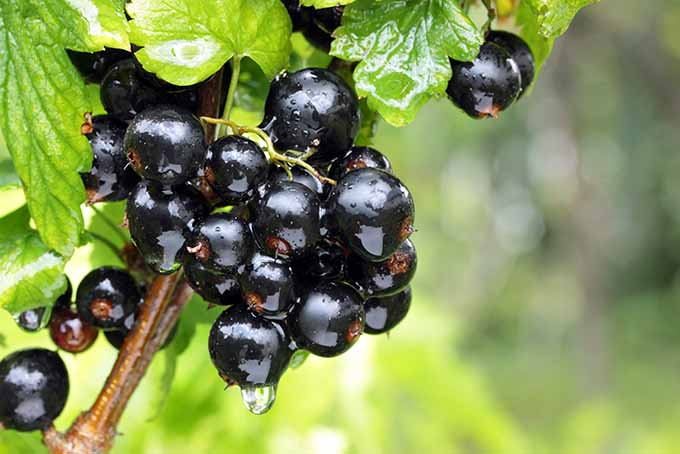
Foodal 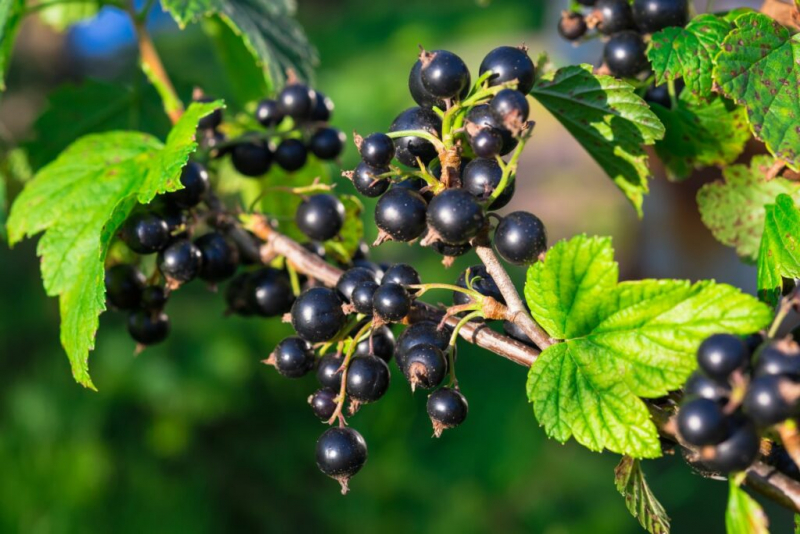
Plantura Garden -
There are multiple species of black seedless grapes within the Vitus genus, including vinifera, labrusca, riparia, rupestris, and rotundifolia. Black seedless grape varieties Vitis vinifera and Vitis labrusca, or a cross between the two, are the most frequently planted as table grapes. Black seedless grapes are renowned for their plump, luscious pulp, intensely sweet tastes, and extremely aromatic skins that provide a nice chewiness. Black Monukka, Summer Royal, Autumn Royal, and Black Emerald are a few of the market's more prominent kinds.
Black seedless grapes range in size from tiny to medium, and their shape is either round or slightly oval. Their skin ranges in color from deep purple to almost black, and some varieties may have a waxy bloom or film on the top to keep moisture in. The skin is firmly attached to the flesh and does not move. Unlike most red or green table grapes, this variety has translucent, soft, and less crunchy flesh. Although black seedless grapes are considered to be seedless, they occasionally do have one or two microscopic, edible, undeveloped, mushy seeds. Black seedless grapes have a sweet, muscat-like flavor and are juicy.
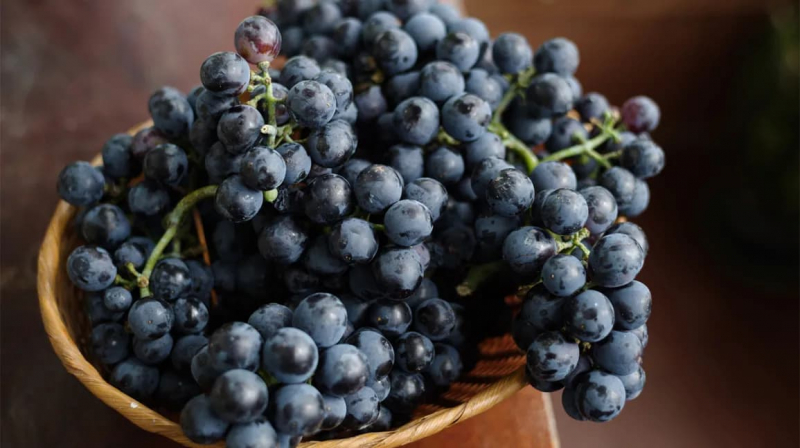
Healthline 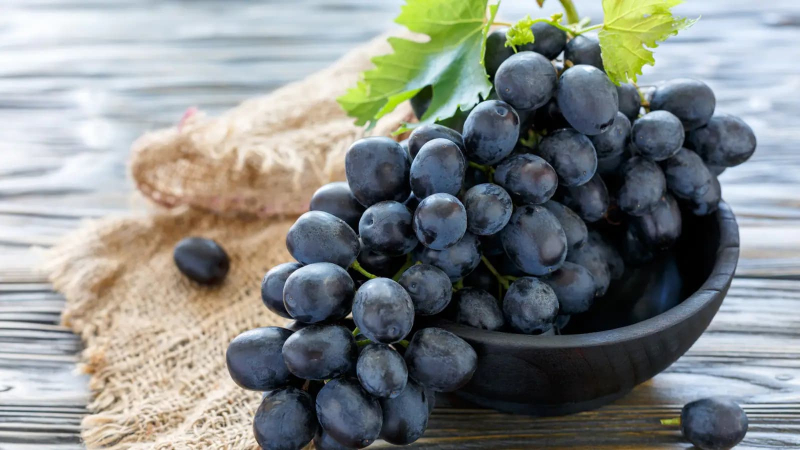
Healthshots -
Black raspberries, botanically classified as Rubus occidentalis, are a rare raspberry species belonging to the Rosaceae family. Due to their restricted availability and rising demand from the specialty fruit industries, black raspberries are seen as an expensive, seasonal fruit. Black raspberries are prized for their ability to self-pollinate and are also grown in backyard gardens. Black raspberries offer rich flavors and complex scents when mixed with colored juice to produce a sumptuous culinary experience. They can be eaten raw or added to prepared dishes.
Depending on whether they are produced or foraged, black raspberries come in a variety of sizes, although they are typically small, measuring only 1 to 2 centimeters in diameter. The raspberry species is an example of an aggregation fruit made up of tiny, practically invisible hairs holding together individual drupelets. Black raspberries are conical to rounded in shape and contain a hollow center. The fruit matures from green to red to dark purple, almost black, and has a more matte appearance on its surface. Compared to red or golden raspberries, black raspberries are slightly more flavorful and fragrant. The fruits' flavor is deep, earthy, and woodsy with berry-like undertones that are bright, sweet, and tangy.
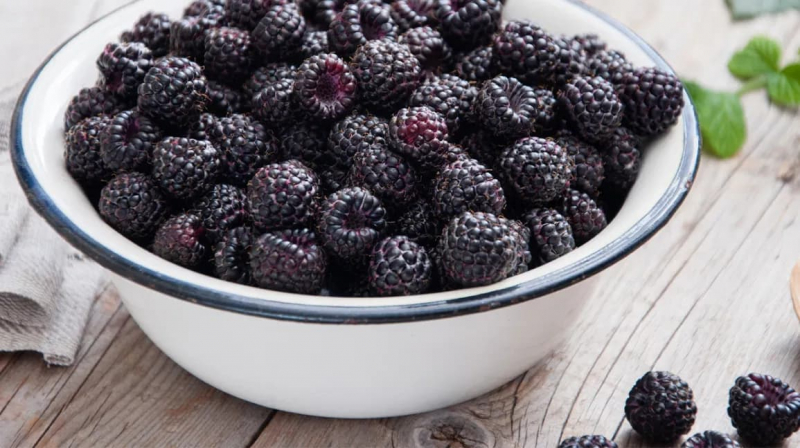
Healthline 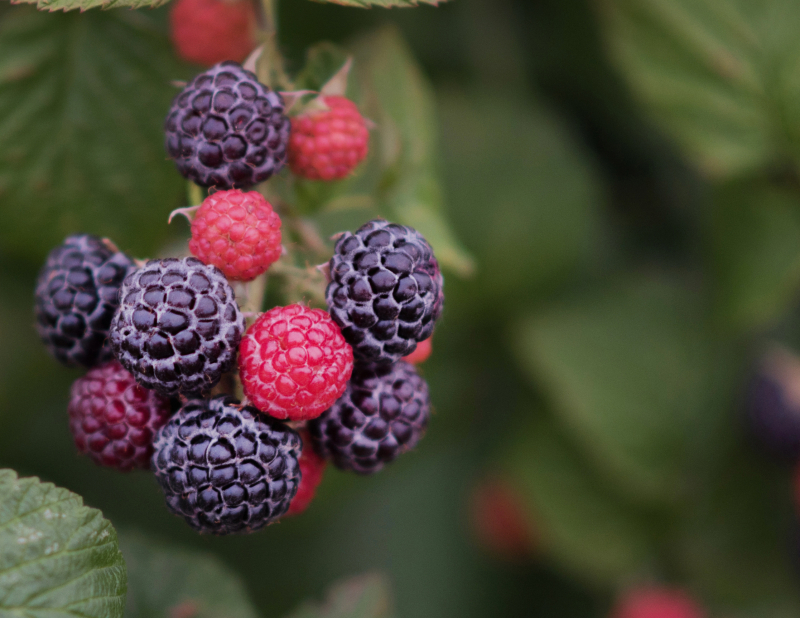
Oregon Berries -
Black Tartarian cherries are popularly pickled in Russia to extend the fruit’s shelf life. Russia is known for having a short summer season, and the cherries are often grown in family gardens, also referred to as dachas. Each Black Tartarian cherry tree gives a lot of fruit, giving families plenty of fresh produce. Pickling is a popular food preservation method used all throughout Russia to preserve fruits for the long, cold winter. Pickled cherries have a tangy, sweet-tart flavor when infused that works well in both sweet and savory dishes. Traditionally used in salad dressings, pickled cherries balance flavors when coupled with rich, roasted meats. The pickled fruits are also well-liked for keeping their semi-firm texture and being able to be kept for up to a year in storage.
Averaging 2 to 3 centimeters in diameter and with a round, ovate to cordate form with a tiny depression where the stem attaches to the fruit, black Tartarian cherries are a medium to large kind. The cherry's skin is thin, glossy, taut, and smooth, and it ranges in color from reddish-purple to an almost black-purple. The green stem, which connects to the fruit's top, is thin, fibrous, and malleable. The flesh is a sensitive, occasionally squishy consistency, semi-firm, watery, and dark red to purple-black underneath the skin. A center, the light-brown pit is also enclosed in the flesh but is easily removed and does not stick. The flavor of black Tartarian cherries is intense, sweet, slightly tangy, fruity, and berry-like.
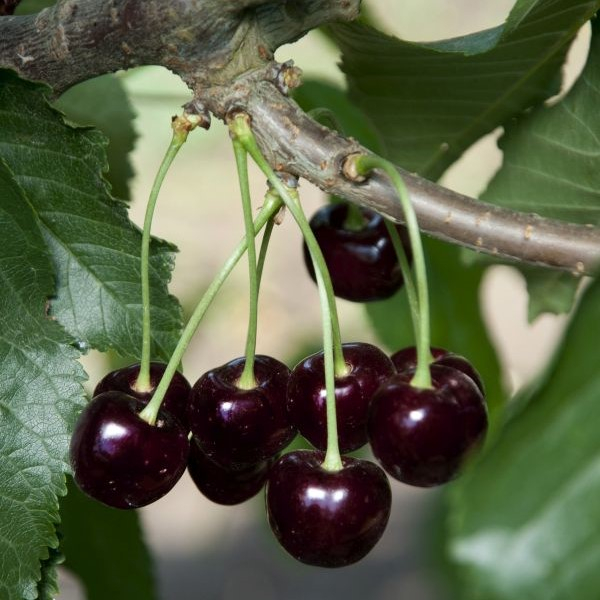
Nature Hills Nursery 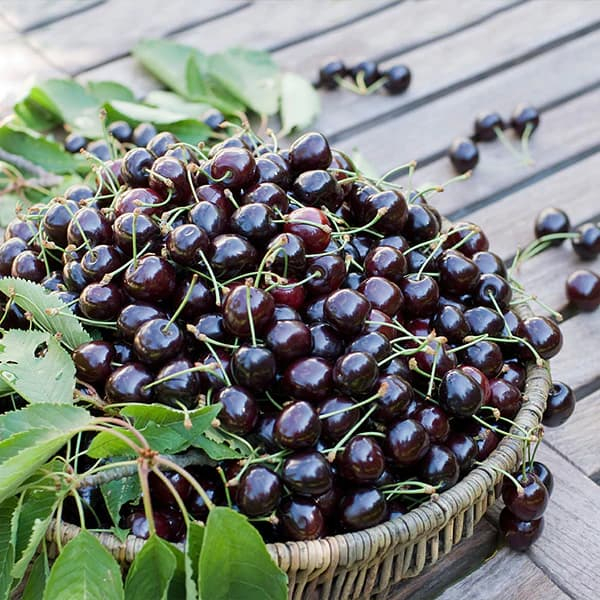
iStock -
Figs grow on the Ficus tree (Ficus carica), which is a member of the Mulberry family. There are almost two hundred cultivars of figs, thus they grow in a wide range of shapes, colors, and textures. The common fig bears a first crop, called the breba crop, in the spring of last season's growth. The second crop is born in the fall of the new growth and is known as the main crop. Figs are botanically inverted flowers. Each fig is not a single fruit, but nearly fifteen hundred tiny fruits.
Black mission figs are available in early spring through early winter. Beginning in winter, night temperatures drop causing a change in the fruit's texture and the fig is no longer at its best for culinary use. The interior of the fig becomes woody and dry, and the seeds begin to separate from the flesh. When ripe, the strong peel of the "fruit" of the black mission fig frequently cracks around the stem end, revealing the pulp inside. A seed mass that is bound by flesh that resembles jelly is inside the smooth, creamy white interior. If not pollinated, the abundant edible seeds are typically hollow. Pollinated seeds are what give dried figs their distinctive nutty flavor.
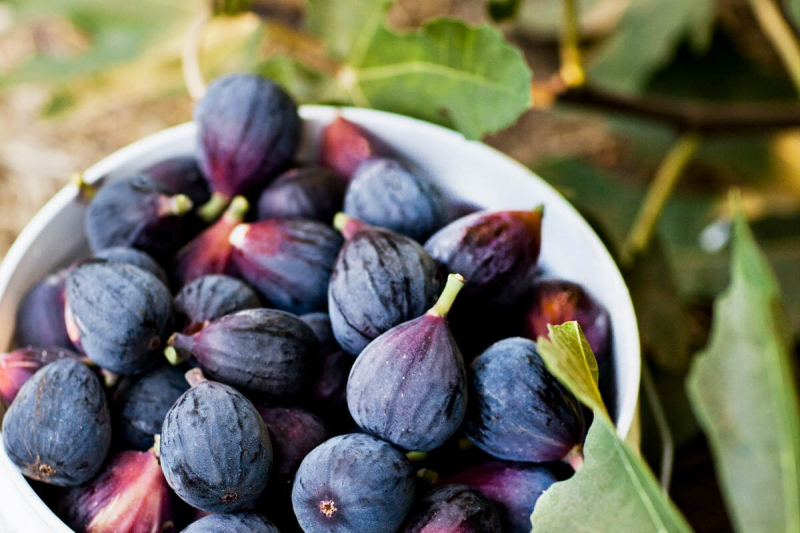
iStock 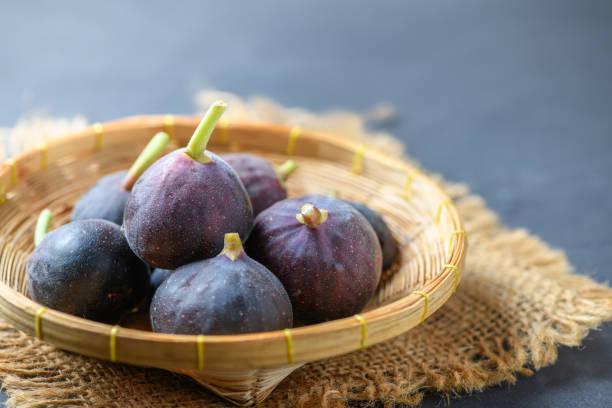
iStock -
Jamun, botanically classified as Syzygium cumini, are small tropical fruits belonging to the Myrtaceae family. Native to the Indian subcontinent, where the trees have been valued for their wood, fruit, and shaded canopy since ancient times, the colored, saturated berries grow on evergreen trees that can grow up to 30 meters tall. Jamun fruits, which are also referred to by the names Jaam, Jambul, Java plum, Jambolan, Nerale, and Mahaphala, are frequently cultivated in backyard gardens, city streets, and other public spaces. The trees have a long lifespan of over 100 years and are extremely productive, producing 50 to 60 kg of fruit per season. Jamun fruits are only taken when they are fully mature; once picked, they stop developing. The fruits are used for a wide range of raw and cooked recipes and are gathered and sold fresh every day.
Averaging 1 to 5 centimeters in length, Jamun fruits have a tiny, oblong to ovoid form with curving, blunt ends. Depending on the fruit's development, the thin, glossy, crisp skin has a variety of colors. When immature, Jamun fruits are green; as they age, they change to variegated shades of green, pink, and red; and when fully ripe, they take on a deep purple, nearly black tint. Jamun fruits have an astringent aftertaste that is followed by a flavor that is delicately sweet, acidic, and sour. Each fruit will have a different level of sweetness, and it's crucial to remember that after eating a fruit, the juice may stain your lips and tongue, sometimes for several hours.
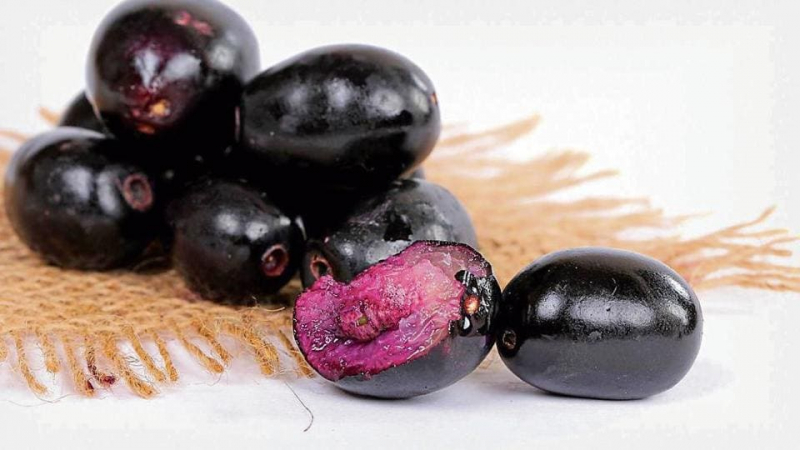
Hindustan Times 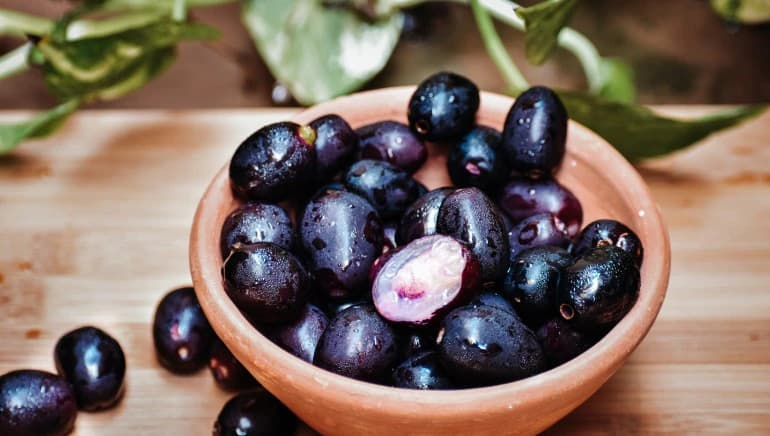
Healthshots -
Black Sapotes are used in cuisines in tropical regions all over the world. The tropical winter weather is ideal for the Black Sapote, as a result, it is one of the few fruits available during the winter months in sub-tropical and tropical regions. In the Philippines, the tropical fruit is skinned and deseeded and the pulp is served with a topping of orange or other citrus juices and is also used for pie or pastry fillings. Mexicans mash the pulp and mix it with brandy and serve it with whipped cream for an adult dessert. In Central America, the fruit is fermented to make a liqueur similar to brandy.
Black Sapotes are squat, spherical fruits with green skin that resemble persimmons. A Black Sapote has olive green skin that gradually darkens as it ripens and occasionally develops black speckles. When the pulp is unripe, it is white; when it is ripe, it turns from dark brown to almost black. Its nickname comes from the flavor, which is sweet, custardy, and chocolate-like. Large, inedible, almond-shaped seeds are arranged non a pit-like cluster in the fruit's center. The fruit is typically bought unripe; ripening can take up to 10 days.
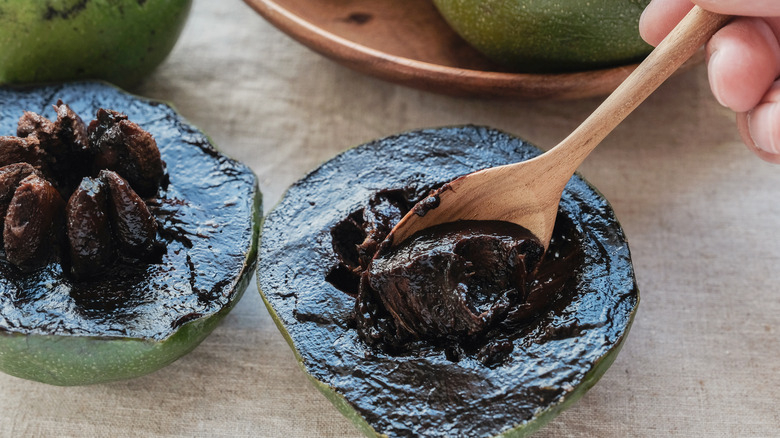
Mashed 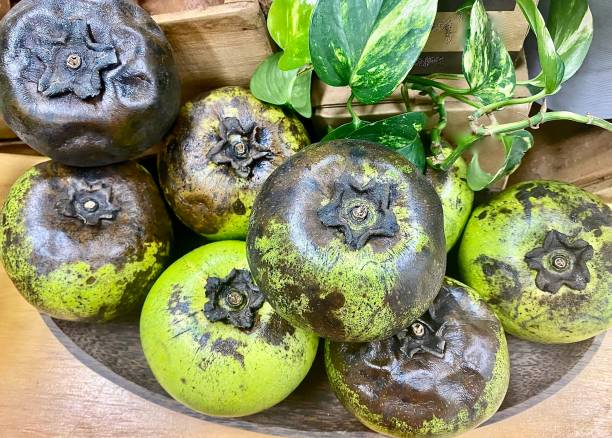
iStock -
Jabuticaba, botanically classified as Plinia cauliflora, is a South American fruit belonging to the Myrtaceae family. It is a tropical or subtropical evergreen tree native to Brazil that produces thick-skinned purple fruits that resemble large grapes. Jabuticaba is one of the most popular native fruits in Brazil and is also known as Jaboticaba and Brazilian Grape tree. It is widely consumed fresh when in season and as a juice product and preserve year-round. As a result of its highly perishable nature, fresh Jabuticaba fruit is rarely available outside of its immediate growing regions.
Round in shape, jabuticaba fruit resembles a concord grape in look as it matures from a brilliant green when immature to a dark purple, purplish-black when completely ripe. The Jabuticaba's rough skin, which is typically one inch in diameter, has a tannic and resinous flavor. One to five flat, spherical, light brown seeds is enclosed in a pulpy, transparent, and rosy pink flesh within the skin. Jabuticaba flesh's flavor has been compared to that of muscadine grapes, which are prized for their fruity and floral characteristics. It is a cauliflorous tree, which means that rather than stems, the flowers and fruits develop directly from the trunks and substantial branches of the tree.
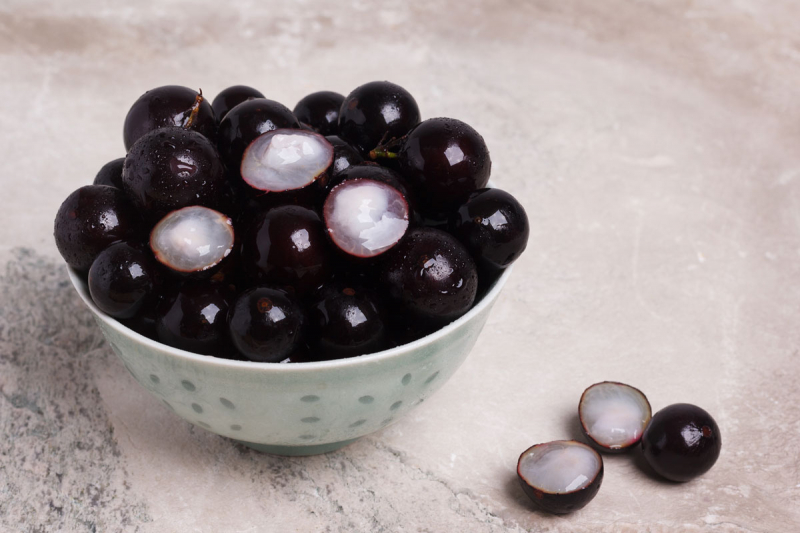
Amigofoods 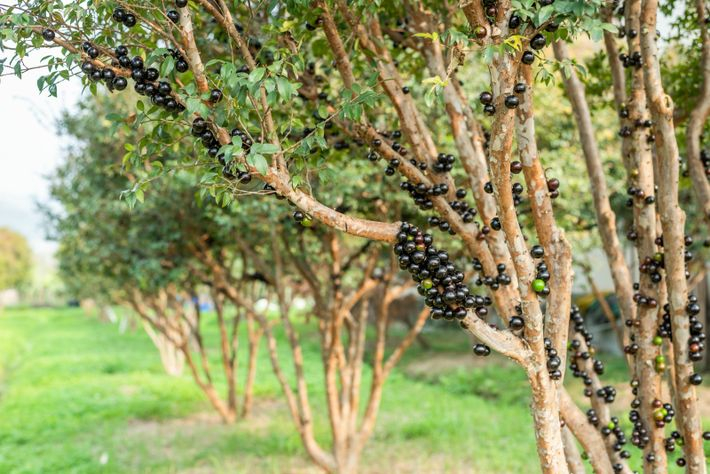
National Geographic












